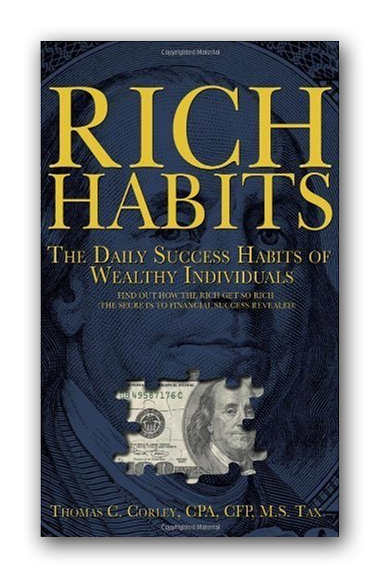
According to the Tax Foundation, only 5% of America’s households make enough money to be considered “wealthy”. And this 5%, according to the Federal Reserve Survey of Consumer Finance, controls 60% of America’s wealth.
According to my Rich Habits research, this 5% share 4 common traits:
#1 The Rich Don’t Follow the Herd
Human beings so desire to blend in, to be a part of the herd, that they will do almost anything to avoid standing out in a crowd. It’s not theory. It’s science (http://www.nature.com/srep/2013/131009/srep02905/full/srep02905.html). Many years ago Candid Camera decided to test this science in their famous Elevator Prank. As funny as that Candid Camera prank was, it highlighted the lengths people will go to blend in and be part of the herd
The problem is, in order to become successful and wealthy, in order to become part of the top 5%, you must separate yourself from the herd – the other 95%. Separation from the herd is a prerequisite for achieving success. Consequently, successful people must become outliers by pursuing various paths towards accumulating their wealth:
- The herd does not save and invest 20% or more of their income – Saver-Investor millionaires, do.
- The herd does not devote hours every day to Deliberate and Analytical Practice or in growing their knowledge-base – Virtuoso millionaires, do.
- The herd does not devote time to forging strong relationships with Powerful Influencers – Big Company Senior Executive Climbers, do.
- The herd is risk averse. They do not put everything they own on the line in pursuit of a dream – Dreamer-Entrepreneurs, do.
If you do what everyone else is doing, you’ll wind up being part of the 95% herd. If you want to be rich and successful, you must separate yourself from the herd.
#2 The Rich Have Growth Habits
Greatness is an evolution. It is the byproduct of daily growth. Growth Habits are daily habits that enable you to grow and improve – to become the person you need to be in order for success to visit you:
- Reading to learn 30 minutes or more every day in order to grow your knowledge-base.
- Thirty minutes a day of daily study of new or important facts you learned from your daily educational reading.
- Perfecting your skills through Deliberate and Analytical Practice in an effort to become a Virtuoso in what you do for a living.
- Focused study in specific niche areas – niche-building helps separate you from everyone else in your field.
- Pursuing dreams forces you out of your comfort zone and into the growth zone. Every dream you pursue exposes you to new information and may also require that you develop new valuable skills.
#3 The Rich Are Persistent and Relentless – They Never Quit
Success takes a long time. How long it takes to become wealthy depends on the path you’ve chosen ( 4 Paths to Becoming a Self-Made Millionaire – http://richhabits.net/4-paths-becoming-self-made-millionaire/). Nonetheless, each path requires a different type of persistence:
- The Saver-Investor Path requires persistence in the form of saving and investing your income, year in and year out.
- The Big Company Senior Executive Climber Path requires persistence in doing excellent work and in building alliances with powerful influencers within your company.
- The Virtuoso Path requires persistence in gaining Virtuoso Knowledge or developing Virtuoso Skills. The persistence part involves a daily commitment to growing your knowledge or perfecting your skills. It takes many years to become a Virtuoso. Only the persistent reach Virtuoso levels.
- The Dreamer-Entrepreneur Path requires persistence in overcoming obstacles, pitfalls, mistakes, poor decisions and failure. Entrepreneurs who never quit, never fail. We call them self-made millionaires.
#4 The Rich Have More Good Habits Than Bad Habits
Most habits are below the radar – most, the 95%, are generally unaware of the habits they have. Those who succeed, on the other hand, are totally aware of their habits. They are obsessed with their habits. They proactively alter their habits – eliminating bad habits that can undermine everything they are trying to achieve and adopting good habits that help them automate their success.
My mission is to share my unique research in order to help others realize their dreams and achieve their goals. If you find value in these articles, please share them with your inner circle and encourage them to Subscribe. Thank You!







